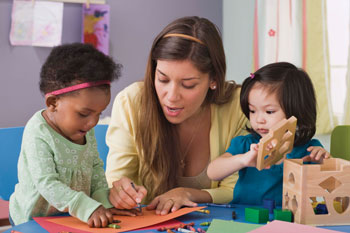 My heart hurt with the sad news the Fayetteville Technical Community College’s Early Childhood Education Center has permanently shuttered its doors. The loss of a 5-star day care center in a young community that needs more, not fewer, of them negatively impacts families, employees and the community at large. FTCC’s Board decided it could no longer underwrite the Center’s financial losses, especially since the pandemic forced the center to shut down more than two months ago. That left a business model with little income and ongoing expenses. Since 1996, the Center provided both high-quality daycare services and a hands-on learning laboratory for students in FTCC’s Early Childhood Education program.
My heart hurt with the sad news the Fayetteville Technical Community College’s Early Childhood Education Center has permanently shuttered its doors. The loss of a 5-star day care center in a young community that needs more, not fewer, of them negatively impacts families, employees and the community at large. FTCC’s Board decided it could no longer underwrite the Center’s financial losses, especially since the pandemic forced the center to shut down more than two months ago. That left a business model with little income and ongoing expenses. Since 1996, the Center provided both high-quality daycare services and a hands-on learning laboratory for students in FTCC’s Early Childhood Education program.
On top of 100,000+ human deaths, COVID-19 is killing U.S. industries that depend on customers who show up faithfully day after day and pay to do so. Daycare is the very definition of such an industry. Working parents depend on daycare, but it is a two-way street. When COVID-19 forced closure of schools and most daycare facilities to slow the spread of the virus, the two-way street shut down. Like the FTCC center, many of those daycare businesses will not return, making high-quality daycare an even more precious commodity.
Underlying the daycare problem in the United States is that we are so two-faced about it. We profess that daycare, especially for preschool children, is essential, and then we walk away.
Daycare is indeed essential to the modern American workplace, but we do not put our money where our mouths are. We tell each other that early childhood education is important on two critical fronts — allowing parents to provide for their families and, with luck, continue upward mobility and preventing educational disparities. High falutin’ talk aside, we put next to no public investment into daycare, relegating the industry to small businesses that are at the head of the failure line when disaster, such as COVID-19, strikes. Most day cares lack financial resources to stay afloat in hard times.
Public schools, where, by far most American children head when they are old enough, are different in one critical way. Public schools, like other essential services such as law enforcement and fire protection, receive public funding. Their teachers, staffs and operations are paid with public dollars.
When disaster strikes, public schools will pick up where they left off when it is safe to do so, while daycare centers can only hang on as best they can for as long as they can. Some economic forecasts project that COVID-19 will cost the United States about half of our daycare capacity. The question then becomes whether daycare be available when parents are ready and can afford to put their precious kiddos back into day care so our American economy can get going again. The New York Times reports about 76% of mothers of children under six work full time, and 96% of their fathers do. Those percentages constitute big numbers, and marshaling the skills of those potential workers is critical to our nation’s economic recovery.
The list of troubled and needy industries suffering from the pandemic is long, and many hands are out for public support. The time has arrived for Americans not only to talk the talk but to figure out how to walk the walk when it comes to day care as support a humming economy.
Either it is essential, or it isn’t.